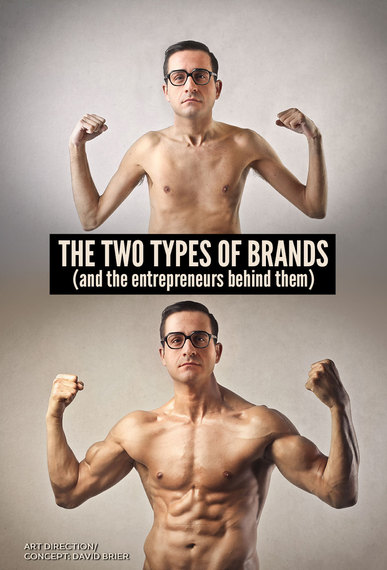Recently, I was having a discussion with branding expert David Brier on the sometimes questionable state of brands today. He laughingly mentioned a client who recently asked, "How did you know? You must have time traveled to know what we'd need."
We both chuckled and David told me his response, "Oh absolutely. I visit the future and return to report my findings. That's my job, plus there are no long lines at the security check points."
A Tale of Two Brands
Both David and I have had the privilege to work with an incredible variety of brands, marketers, businesses and entrepreneurs throughout our careers -- from exciting startups to global Fortune 100 companies.
During that time, we've noticed a distinct pattern in businesses, essentially creating two distinct "groups" of brands, entrepreneurs and business leaders.
David mentioned in a previous post that touched upon a related pattern concerning the "management side" of business, but David raised an interesting point that would enable those of us who manage, influence or create brands to choose whom to work with when choosing which brands we can effectively impact.
So I decided to interview David to shed light on this important point for those of us who live and breathe branding for a living.
It's About Time
Steve Olenski: David, you mentioned this is about time. A gazillion books have been written about time and management. How is this different?
David Brier: I started noticing this pattern with a number of clients, and I realized it came down to that ultimate nemesis: time (which so many of us struggle with). But in a different way. Not how brands, CEOs or entrepreneurs use it. Or manage it. Or balance it. It's something much more subtle. I had to isolate two prevalent types of business approaches I kept running into and asked myself this question: 'How is it some brands, CEOs or business leaders can usher in something that gets people excited and passionate while others can be successful (even very successful),plowing along without stirring such passion, enthusiasm, allegiance and elated eagerness?' That's where it started.
Connecting Dots Others Don't See
Olenski: What did you discover?
Brier: Looking over brands and the people who got us as branding professionals excited to work on their brands and projects, I found one common characteristic: those who excited me were looking to the future. More to the point, they were creating the present starting with the future. Like a gold medal Olympic runner, they are motivated by the end goal, the finish line, the win for their country.
In short, by that factor that doesn't yet exist. This group of business leaders is one category of business people and businesses -- a very exciting type of entrepreneur to work with since they look at things which don't yet exist and work to bridge the gap between what isn't yet.
Oftentimes, these are seen as the visionaries, the 'geniuses,' the ones who ignore (or redefine or reinvent) the box everyone else is trying to think outside of. I covered some of this in my video, 'What is innovation?' which first appeared in a Fast Company post I'd written.
Connecting Dots Everyone Sees
Olenski: OK, so you notice this pattern, something all of us as branding professionals could use. You've mentioned one group. Are there any others?
Brier: The other category of brand and entrepreneur is the one who creates the future starting with the present. This approach uses today's resources and looks to move those into the future. This tends to be a bit more conservative even though it can achieve incredible success. The difference is this: referring back to the Olympic runner mentioned above, you would find a distinct difference between the runner that's focused on right now, their current stride, how much they're breathing, etc. and the one focused on the future. The difference is 'the launch pad' or 'foundation' of each.
It's almost a question of are they looking forward from now or looking back (reporting to us their findings) from the future? The most commonly known example of these two types of entrepreneurs is the difference between Microsoft, and Apple under Steve Jobs. Microsoft used the present to create their future in business whereas Steve Jobs endlessly looked to what could be and started with the future dreams and aspirations and brought them into being. This mentality and orientation defined each company, its DNA and the overall culture each company was known for.
There's a cousin of this second group (that creates the future starting with the present): it's those who create the present starting with the past. (I am not speaking about those who are revivalists or curators of incredible vintage artifacts.) I am referring here to those who refuse to change with the times or recognize new ways to attack a problem, and insist that the old notion or approach is somehow sacred and must remain inviolate, even when faced with insurmountable evidence that it is no longer effective. The dividing line is, where does a project, brand, dream or vision start? If it starts in the past, it is most likely to become extinct as times change.
If it starts in the present, the options remain more limited since one is using today's available resources.
If it starts in the future, it's a wide open playing field and you're likely "one of the crazy ones" who might just change the world.

